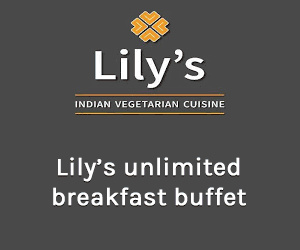Vicky Smith goes off-piste in Germany’s largest state, also meeting some eccentric residents…
“There are over 500 bridges here, more than in Venice,” Alexandra Johns said with a smile. We were strolling down a quaint cobbled street, bordered on one side by a trickling stream; behind this stood a row of Germany’s signature pastel houses, each with a tiny bridge to their front door. “And our water management system, which dates to the 14th century, is listed by UNESCO.”
Talking of water, there was far too much for my liking on the rainy morning of our tour. But Johns (main image) - a guide in Augsburg, Bavaria’s third-largest city - wouldn’t let the weather dampen our group’s spirits. A true force of nature, she was even dressed as Sibylle Fugger: the wife of merchant Jakob Fugger, who lived in Augsburg at the turn of the 16th century and is claimed to be the richest man in history. Clad in a deep blue corseted gown, with gold and white detailing, she expertly navigated her full velvet skirt over puddles and carried a dainty white parasol to ward off the showers.
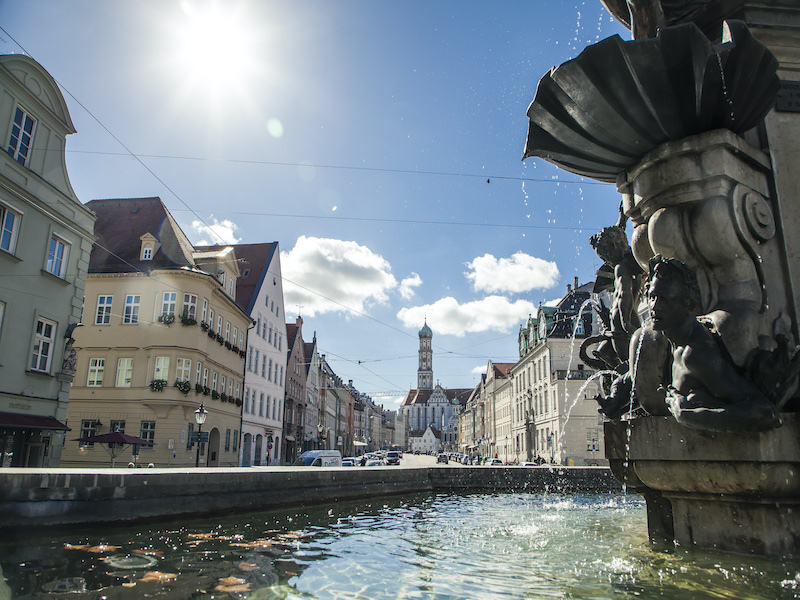
We were in Bavaria to discover some of its lesser-known charms, beyond the big crowd-pullers like Neuschwanstein Castle and Oktoberfest. Situated on the picturesque Romantic Road route and full of creative verve, Augsburg was a prime candidate.
Our morning spanned quirky independent stores to ancient guild houses and attractions like the lavish Town Hall, plus stepped gables and medieval fairy-tale vibes aplenty. Afternoon, meanwhile, saw us take a trip to nearby Waldstetten: home of talented seamstress Sandra Müller, who works to preserve Bavarian costume using traditional fabrics and prints, many of which are dying out. Müller additionally runs button-making workshops and, through her brand Trachtenpunk, gives longstanding garments like the dirndl a punk feel. Visiting her eclectic home-studio was a welcome injection of colour into a resolutely grey day.
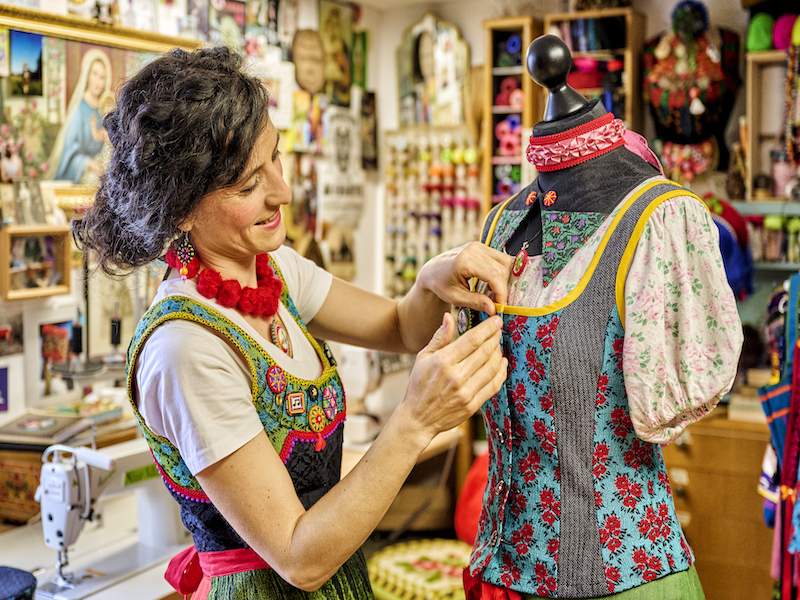
Back in Augsburg, we rounded off with a visit to (arguably) its most famous landmark. The Fuggerei is the world’s oldest social housing complex still in use, and now hosts a museum telling the story of this pioneering site, which was founded by Jakob Fugger in 1521. Perched on the edge of the walled settlement is cosy restaurant Die Tafeldecker, where we spent the evening feasting on tapas with a Swabian slant. The weather hadn’t played ball but - as we all agreed with a hearty “prost” - our time in this underrated region had been well worthwhile nonetheless.
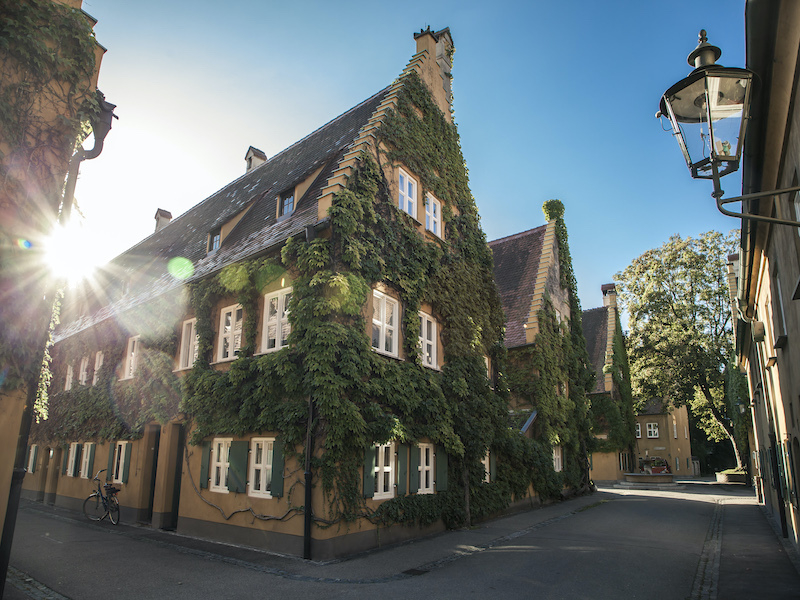
“Very bovine, and very Bavarian.” That’s how I’d describe our next day in Germany’s largest state, which kicked off with a 90-minute drive to Reichersbeuern: a rural hamlet of wide wooden houses, some frescoed with scenes of daily life or religious figures, in the Alpine foothills. Pulling up to one of these, we were greeted by a friendly man dressed in a Tyrolean hat, woolly cardigan, lederhosen shorts, long green socks and clogs (as I said, very Bavarian), who introduced himself as Werner Härtl.
Formerly a farm worker, Härtl is now an artist - but forget oil paints or pencil, he paints with dried cow dung. “Some people think it’s dirty,” he grinned, “but really it’s just digested grass, and clinical research has actually shown it contains healthy bacteria!” There are other reasons for his unconventional medium, too. “I want to remind people of our relationship with nature, where our food comes from and the importance of small farmers - a big part of Bavarian culture, as well as wider society.”

Fittingly, Härtl’s studio is in an old cow shed: surprisingly inodorous save for a sweet earthy tang. It’s hung with pictures spanning fantastical creatures to pastoral vignettes, all very brown but undeniably clever and created by mixing dung with water for a variety of brushstrokes. Comically, there are even some cow pats topped with gold leaf: a material that the enigmatic artist sometimes uses to ironic effect. The works weren’t to my taste but, as with Müller the seamstress and Florian Blickenberger - a jeweller we visited later in our journey, who’s inspired by symbols like the Bavarian lion - it was interesting to see age-old customs being repurposed for a modern audience.
Afterwards, Naturkäserei TegernseerLand in nearby Kreuth made for a suitably bucolic lunch stop. Set against a classic Alpine backdrop, complete with spotty cattle and mist-shrouded peaks, this dairy and restaurant is renowned for making quality cheese and also offers a little tour (including a tempting peek at the storage rooms and their neat rows of roundels). Having tucked into specialities like seasonal white asparagus and cheese soup as thick and creamy as fondue, we were set for a leisurely afternoon around the shores of scenic Lake Tegernsee. Want an idyllic Alpine holiday without the crowds? You could do a lot worse than here...
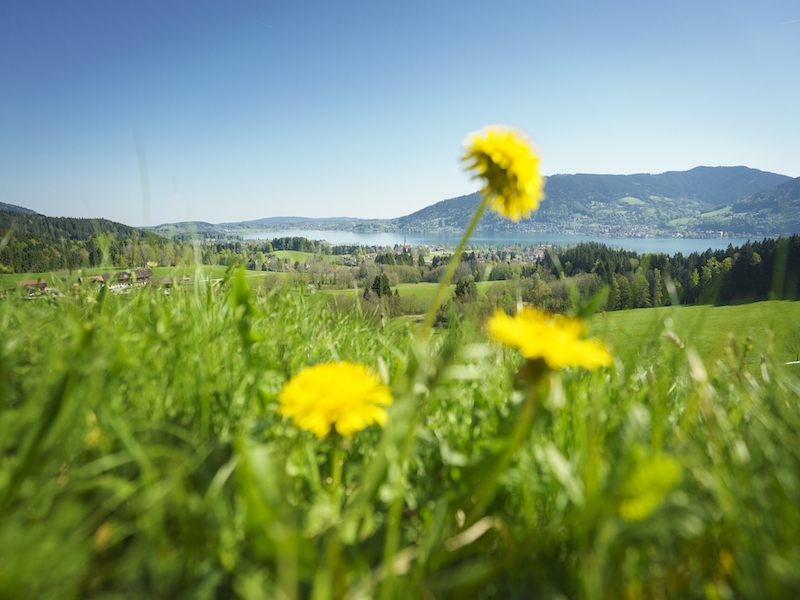
Moos and mountains also characterised the last full day of our Bavarian fling, with two aerial lifts into the Chiemgau Alps. The first saw us ensconced in chairs, legs dangling above the meadows and a breath of fresh spring air on our faces as we ascended slowly upwards. Immersed in the ultimate meditative soundtrack - tinkling cowbells, bubbling streams and the liquid trill of birds - I felt a twinge of disappointment on reaching the cable car platform for the onward trip to Hochries’ crest. Shortly after our arrival at the top, though, the clouds parted to reveal a glorious sunlit valley surrounded by wooded slopes stretching into the distance, spring gentians forming startling indigo splotches in the foreground. It had been worth the second leg.
Accompanied by Stefanie Praml from Munich Wanderland, we completed a short hike - meanwhile learning about everything from the return of wolves here to the local tradition of erecting summit crosses - before heading to the Hochrieshütte restaurant. Order? Kaiserschmarrn, an Austrian sweet treat of fluffy pancake pieces that’s popular in Bavaria too. Naughty but very nice indeed.
Arriving into Munich, after a night in pretty Rosenheim, marked the end of our group foray around some of Bavaria’s overlooked delights - yet the state capital is arguably one of the most underrated of all. Called at by many international travellers solely for its famous Oktoberfest, this fine city serves up plenty more than beer-fuelled shindigs: which is why I subsequently spent a few days here, meandering cobblestone alleyways lined with olde-worlde buildings in the historic centre before casting my neighbourhood net further. I explored Bogenhausen’s leafy streets and Secessionist landmarks, the meatpacking district with its graffitied shipping container outlets, Maxvorstadt’s glut of museums and a myriad besides.
Suffice to say that, while you can find many more charms across this wide swathe of southern Germany - from the storybook settlements and wine region of Franconia to the places I visited last year - my latest trip had been a varied reminder of what Bavaria has to offer beyond the tourist trail. Go to the headline attractions if you want, but then take a detour; you never know what you’ll find.
Main image: Vicky Smith
Fact file
Vicky flew out with Lufthansa, which offers regular direct from several UK cities (including Manchester and Liverpool).
She stayed at Hotel Maximilian’s in Augsburg, Parkhotel Egerner Höfe at Lake Tegernsee and Schwan Locke in Munich.
For more information, visit the tourist websites for Bavaria and Munich.


